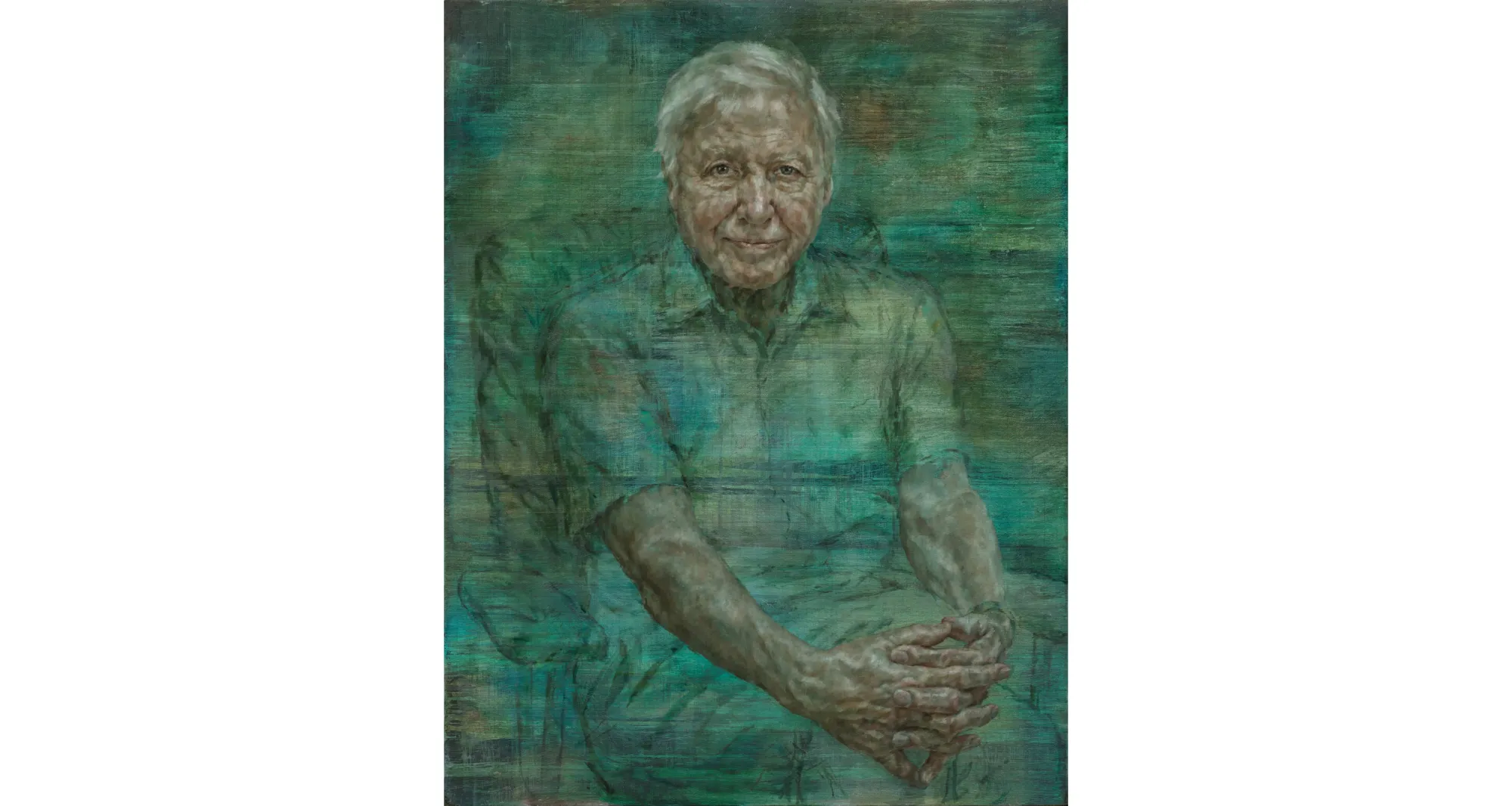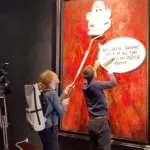
The Royal Society has unveiled a portrait of Sir David Attenborough by Jonathan Yeo, the artist whose recent painting of King Charles III generated negative attention online.
The Attenborough painting commemorates the British broadcaster and biologist’s fellowship to the Royal Society. It shows Attenborough in a polo shirt seated against a green background, looking directly at the viewer. His hands are clasped around his knee, which the Royal Society said shows that he is “engaged in conversation.”
Yeo said in a statement that he chose this “ambiguous natural green background, as if he might be emerging from one of the many habitats he has captured on film during his career.”
“It was a tremendous honour to be elected a fellow of the Royal Society over 40 years ago and that my portrait has now been painted by such a master as Jonathan Yeo for the Society’s extensive and important collection is extraordinary indeed,” Attenborough said in a statement.
The portrait was unveiled in a private ceremony with Attenborough and Royal Society president Sir Adrian Smith on June 25, and then on the BBC through a studio interview with the artist.
The prominent portrait artist has built a long reputation for painting royal figures and other notable celebrities, including Queen Camila, Prince Philip, former prime minister Tony Blair, Rupert Murdoch, and Damien Hirst.
Members of the public interested in seeing the painting of Attenborough will be able to view it at the Royal Society starting on July 2 as part of the national science academy’s summer science exhibition.
Yeo recently made headlines for his official portrait of King Charles III, which was widely panned. The seven-and-a half-foot-tall painting portrays the monarch in the uniform of the Welsh Guards, holding a sword in his hand and directly facing the viewer. Most of the painting, except for the King’s pensive face and hands, are detailed in an array of mottled reds and pinks. There is a monarch butterfly above the King’s left shoulder.
Writer Danielle Cohen suggested in the Cut that “Charles’s face is like a disembodied specter of death floating between violent brushstrokes.” Opinions on social media were even more blunt, with some saying that the work seemed to represent the “Archdemon of Hell” or Satan, or that Charles was “bathing in blood” or “surrounded by the spilled blood of the British Empire.”
